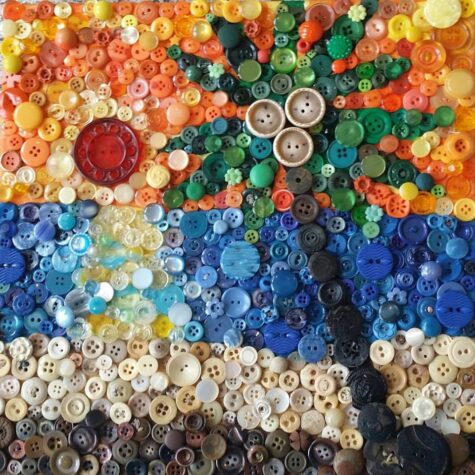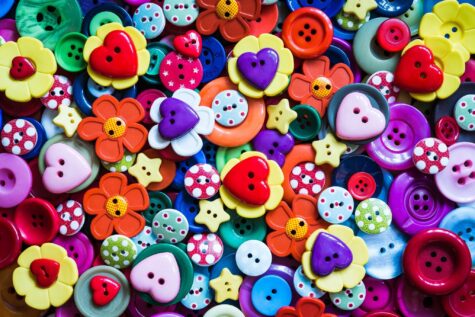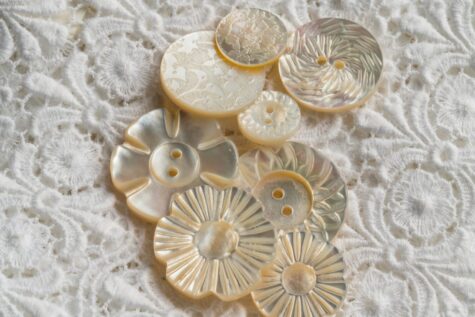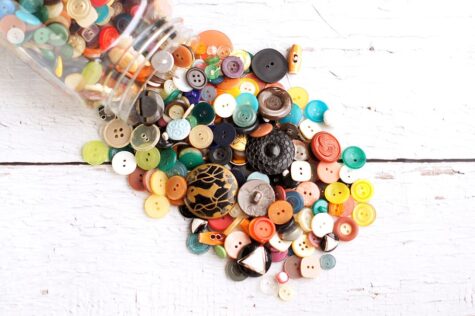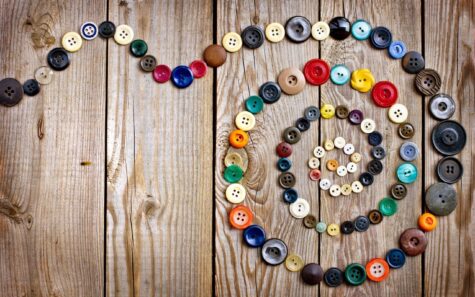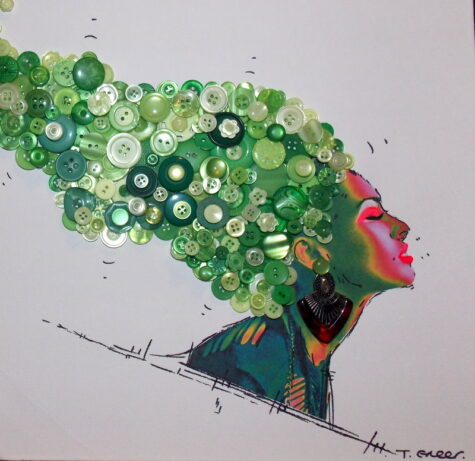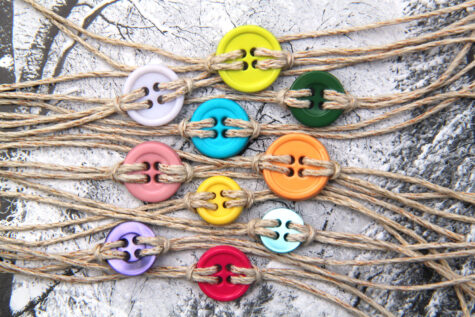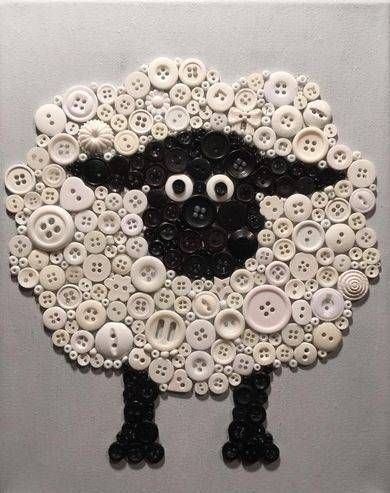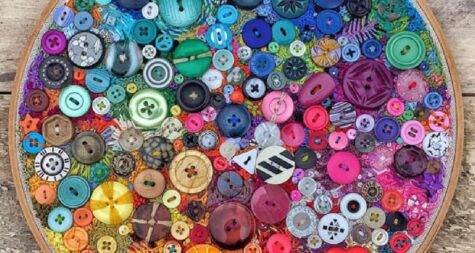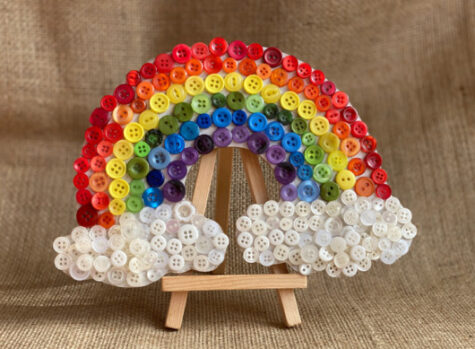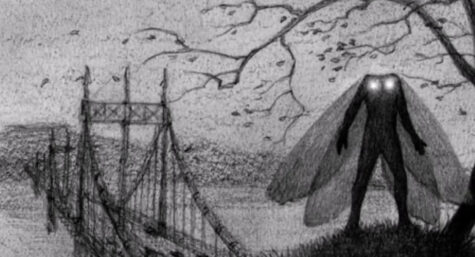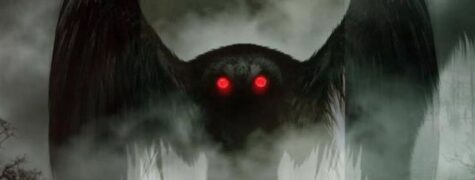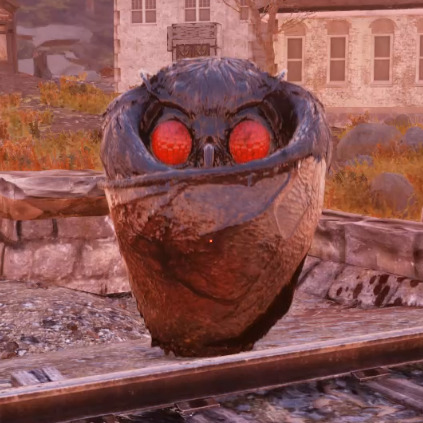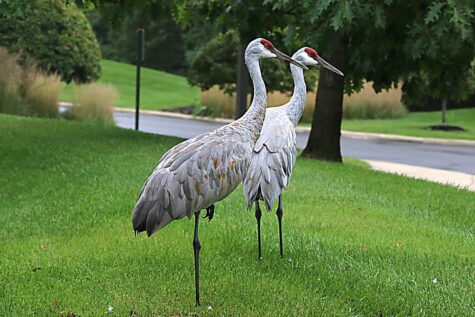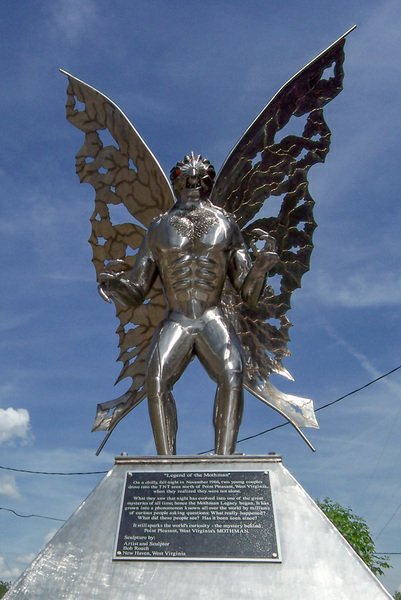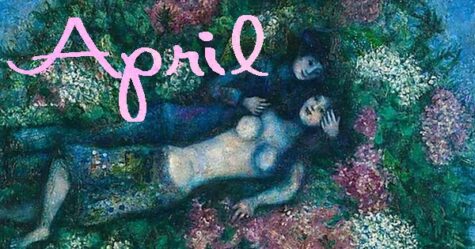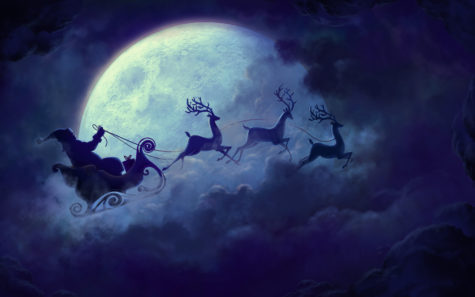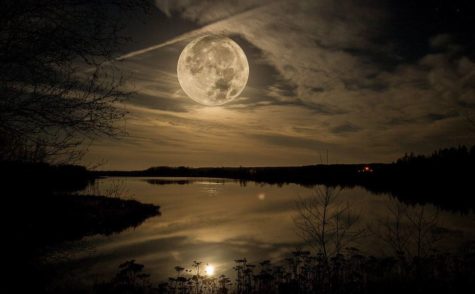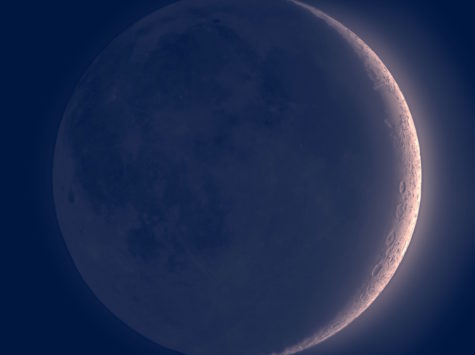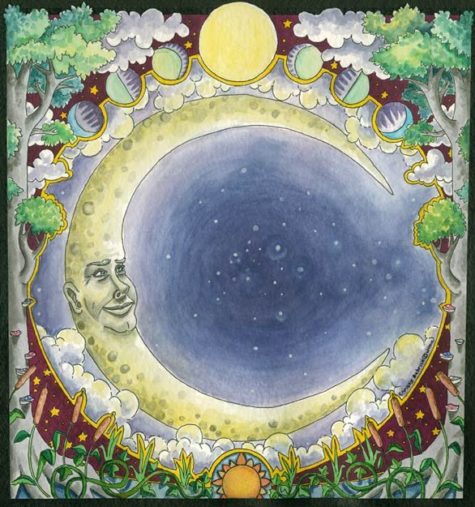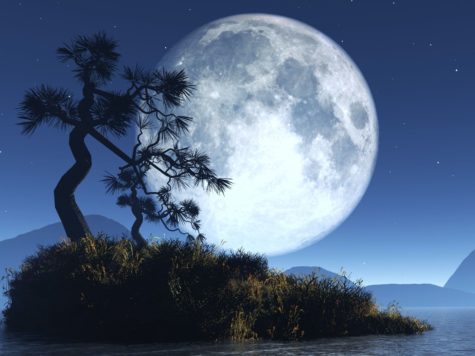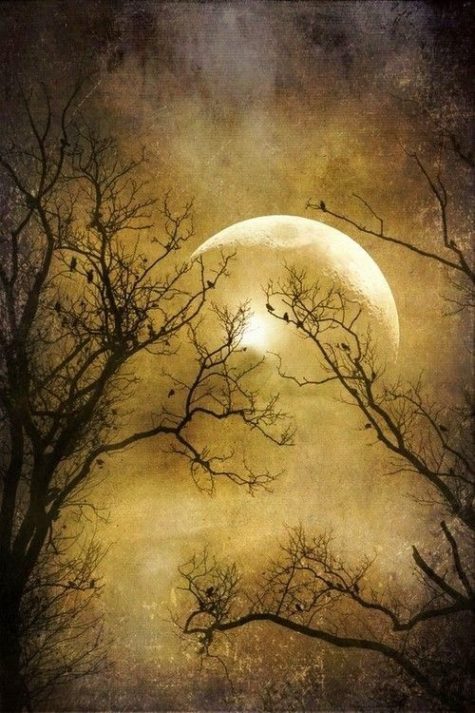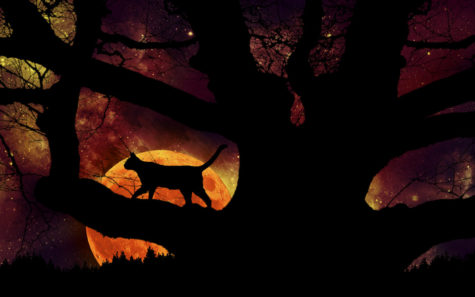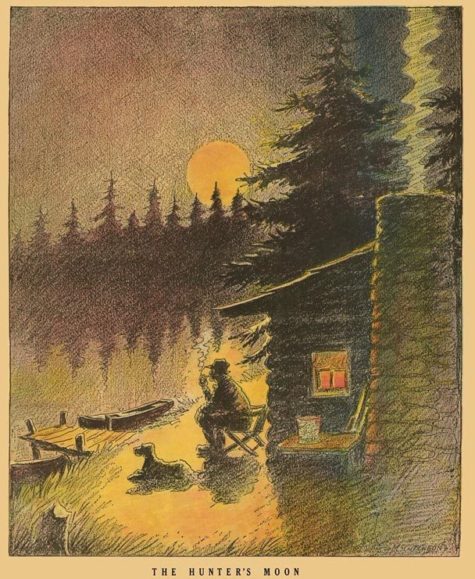Folklore
National Button Day on November 16th celebrates the function of buttons and the hobby of button collection. Buttons are so commonly found in our clothing that we tend to take them for granted. Buttons have various functions other than just keeping our clothes perfectly together, not denying that it is an important function. They have been used for decorative and gaming purposes as well.
Some people just like to collect buttons for their sparkle and cuteness and others collect signature buttons that have been somehow important to them. There are thousands of button collectors in the United States. Crafters across the country utilize buttons in creative ways. They are some of the best at finding new uses for old items.
Buttons come in different materials, patterns, designs, and sizes. Buttons have been made of a variety of materials. Ancient buttons were formed from natural and readily available substances such as stone, shell, bone, clay, or wood. In more modern times, metals, plastics, resins, and acrylics have been used. While buttons were created to fasten two pieces of cloth together, they also served as decoration.
While buttons today can be simple disks with two or four holes allowing a needle and thread to pass through, button makers create more elaborate designs. If you can imagine it, there’s probably a button like it. From animals and food to iconic buildings and famous people, button makers make them. They’re colorful and fun. While the fun ones may be less practical, they still function.
The origin of buttons can be traced back to 2800 BC where shells were used for making ornaments and seals. However, the buttonholes with buttons as fasteners first emerged in Germany and from there, spread throughout Europe. The buttons were made using the popular materials available during that period. Today, we see buttons mostly made of plastic, metal, wood, or seashells.
Why National Button Day?
The National Button Society was founded after the Hobbies Magazine conducted a hobby show in 1938 and found many participants to be button collectors and thus the National Button Day. Both novice and advanced button collectors celebrate the enjoyment of collecting on this day.
The appeal of buttons is clear. They come in every shape, color and style, from pearly white shirt buttons, to ornate Victorian affairs, to cute fastenings shaped like insects and animals. Any outfit can be updated by adding the right buttons, and sewing them on is one of the easiest types of needlework to learn. And they don’t just belong near buttonholes, either. Clusters of buttons can be used to decorate almost everything, and even on their own in jars they are delightful to handle, play with and admire. Some collect them, but most just lose them. Regardless, nearly everyone seems to love them, or at least regard them with fascination.
In case you may be thinking that buttons do not deserve their own holiday, try to imagine what life would be like without them. Sure, we have zippers and velcro, but could you imagine velcro down the front of your elegant blouse? Of course not!
A Short History of Buttons
It took the buttonhole to popularize the button in medieval Europe. Buttonholes were invented by Moorish tailors as a means of fastening garments and adopted in Europe in the 13th century. Then buttons became so prominent that in some places sumptuary laws were passed putting limits on their use. The earliest evidence comes from 13th-century German sculptures, which show tunics featuring six buttons running from neck to waist.
Buttons in fourteenth century Europe were hand-made in beautiful shapes and colors. They were both costly and decorative and used to boost the ego and attract attention. John Brandon, for example, who died in 1384, was shown with 40 buttons on the sleeve of his undervest alone.
The wearing of gold, silver, and ivory buttons in fourteenth century Europe was an indication of wealth and rank. Expensive buttons were also made of copper and its alloys. The metalsmith frequently embellished such buttons with insets of ivory, tortoiseshell, and jewels.
There was a button mania in the late Middle Ages, resulting, in some outfits adorned with thousands of buttons, all of them with accompanying buttonholes. Dressing and undressing became a laborious process, but created a niche for the employment of professional dressers.
In the 15th or 16th century someone discovered that a loop slipped over a button, or a button pushed through a slit in the cloth, made a better fastener for the close-fitting garments that were coming into style. For some time, however, the chief use continued to be ornamental.
The asymmetrical fastening of jackets of the wrap over style came into fashion in China during the 15th and 16th centuries and was worn by men and women, royalty and peasants. It was the material and the buttons that showed rank. Peasants wore rough cloth fastened with anything that came to hand while the emperor wore silk and furs fastened with jewels.
In the 1700’s metal buttons were used and button covering was created. Metal threads were wound about a button in intricate patterns. Miniature scenes were painted on ivory or glass buttons. Some buttons were engraved and inlaid with silver.
Frederick the Great organised the buttons on soldiers’ coat sleeves being sewed on the top sides of their sleeves. This was to ensure that the soldiers would scratch their faces open every time they tried to wipe their noses on their tunics.
In the middle of the 18th century, Matthew Boulton, the English manufacturer and partner of James Watt, introduced the bright, costly, cut-steel button, which was made by attaching polished steel facets to a steel blank. Matthew Boulton built the Soho manufactory near Birmingham. The factory produced small metal articles such as gilt and silver buttons and buckles.
Noting the abundance of pearl mussels in the nearby Mississippi River, German immigrant J.F. Boepple, founded a pearl button company in 1884 Muscatine, Iowa He produced buttons that looked like pearls by machine-punching them from freshwater mussel shells harvested from the Mississippi River. His button-making factory grew to be the largest manufacturer of pearl buttons in the world. From that time forward, Muscatine was known as “The Pearl Button Capital of the World”.
Celebrating Button Day
Take some time on this day to either go though your existing button collection or start a new one, and enjoy Button Day to the fullest! Who knows, perhaps you possess in your collection an antique button that’s been passed down for so long that you’ve never stopped to think about where it came from. Keep your eyes open! Every now and them someone discovers a treasure that had just been sitting around collecting dust at their home. And even if you don’t, an all you have is regular buttons, don’t worry and just enjoy an afternoon looking at the pretty, shiny little things. At the end of the day, people are animals, and there’s nothing animals like better than something pretty and shiny.
- Take a trip down memory lane.
Do you remember your grandmother or your mother snipping the buttons off shirts headed for the rag basket? Those buttons often collected in jars or tins. Maybe you even played games or strung them for ornaments and crafts. The buttons were fun to stack into piles, sort by color or size, or scatter and slide across the floor or table making up different games each time.
- Begin a button collection.
If you like buttons and didn’t have a chance to collect buttons before, you can observe the day, by collecting your first set of buttons either from your old shirts or get a few nice ones from the store!
- Show your button collection on Social Media
If you have already been collecting Buttons share your collection on Social Media using the following hashtags: #NationalButtonDay and #ButtonDay
- Craft your way with buttons!
If you love designing or making crafts, use buttons to make a unique craft today! You could make anything from greeting cards, posts to toys depending on the colors and size of the buttons! You may look up the internet for other activities too.
- Learn to sew a button!
Another best and productive way to celebrate your love for buttons is by learning to sew on of them. You never know, when this skill might come in handy!
- Play a game with buttons
Play a game with buttons, such as tic tac toe or even checkers. You can also have a contest as to who can build the tallest stack of buttons, or who can flick buttons into paper cups from the farthest distance.
- Visit a buttons museum
Use this day to visit a local museum that displays their button collection! A few museums have an online display too such as the Victoria & Albert Museum, Hammond Turner & Sons, Smithsonian National Museum of the American Indian among many others.
Interesting Facts About Buttons
Men shirts have buttons placed on their right and the women have buttons placed on the left. There is a difference because mostly men dressed themselves using their right hands and the wealthy women were usually dressed with the help of maidens and the left side position of the buttons was necessary for doing it easily. The pattern is still followed today!
- In the ancient days, buttons were used as ornaments rather than as fasteners.
- The oldest ever button is found in Pakistan.
- The Waterbury Button Company has been the largest button manufacturer since 1812.
- New York is home to the largest button in the world.
- Joseph Coors Jr. created the indestructible diamond Z button which obviously must last longer and expensive.
- Before the 13th century, the use of buttons to fasten your clothing was taken as an indication that you led a loose life.
- Francis 1st of France (1494-1547) had 13,600 gold buttons on a single coat, which he wore when meeting King Henry VIII of England.
- King Louis XIV had a coat with 123 diamond buttons on it.
- Today, 60 per cent of the world’s buttons are made in one Chinese town, Qiaotou, which churns out 15 billion buttons a year.
- 1 in 75,000 people suffer from koumpounophobia, the fear of buttons.
- During World War II, Canada gave out buttons to people who tried to enlist but were refused due to medical reasons to show their willingness to fight.
Button Magick
Buttons are incredible little tokens much like coins or rocks that can be used for a plethora of fun and useful witchy crafts. They’re small, portable, wearable, transferable, and can be made easily or found for very little money at most thrift stores and craft shops!
Who knew buttons are magickal little tools? Our ancestors did, of course! Did your grandmother or aunt keep a tin or container of random buttons? Mine did and gifted to me. At the time, I wondered why a tin of buttons was so important. Now I know. If you were blessed with a tin of buttons from your family, keep it and make use of it!
- Ancestral work!
If anyone in your family has sewed they probably have a box/jar/tin of sewing supplies left around with some buttons in it! Use these on ancestral altars to again create that connection.
- Friendship spells!
Buttons are a kind of clasp or connection, therefore using buttons in spells for bonding can symbolize a connection, or clasp, of two or more people!
- A Button Magick Charm Necklace
Back in the day our ancestors collected and saved buttons. If you have a collection of buttons, you can make a magickal button necklace. Or what was once called a wishing necklace. For each button you string onto the necklace, pray over it your intention. Different colors for different intentions, etc. Make it fun and be creative!
- Divination.
Often buttons are used for eyes on dolls and stuffed animals and placing a button in front of you during a divination ritual can help you visualize and therefore open your third eye.
- Elemental Buttons
Buttons of certain materials can be used to harken back to certain elements, like clay or wooden buttons for Earth, or shell buttons for water.
- Altar Decorations
Buttons can be used as altar decorations, and larger buttons can act as tiny plates, display stands, or bases for mini offerings!
- Button Magic With Bags and Bottles
Buttons are great to add to shaker jars. When you shake the jar, they make awesome sounds! For me, part of the allure of a shaker jar is not only the prayer while shaking, but the sensory stimulation. The sounds release energy along with your prayers.
Also, buttons can be added to spell bottles and bags. Again, choose colors and styles matching your intentions. Think of the button’s job in the spell as “buttoning” up the situation.
- Sigils
Draw or paint sigils on the back of buttons with a sharpie and seal with some clear glue/resin. Sew them onto your shirt, bag, or thread them to wear as jewelry!
- A Declaration of Love
Japanese male students often confess their love to a female by giving them the second button from the top of their school uniform. The second button is the one closest to the heart.
Sewing Buttons With Intention
- To attract money – attach the button with the letter Z with a diagonal strip to the other side.
- For many fans – the stitches should be in the form of an hourglass: two horizontal stripes and the letter X in the middle.
- To strengthen friendship – an equal sign;
- Success in creativity – the letter A.
- Success in business – letter Z;
- Harmony with the outside world – a square;
- Gaining developed intuition – two vertical stripes;
- Health promotion – the cross;
- Increase of well-being – a cross and two verticals;
- For gaining passionate love – a cross and a square.
Button Superstitions
Buttons and the superstitions surrounding them are fascinating. While we tend to think very little about these ancient fasteners, our recent ancestors had a lot to say about the magick in buttons.
For example, it is believed that you cannot sew a button “on yourself” so as not to sew up the mind and memory . As an antidote, it is recommended to clamp a thread or other object between your teeth, even a piece of clothing.
Another belief says that sewing buttons on right before the New Year is not the best idea. Better to wait until the next day.
If you are preparing to meet a person who is unpleasant for you, then fasten all your buttons as tightly as possible. The buttons will work like a talisman and protect from any negativity coming your way.
Losing a button from your shoe is bad luck. The only way to get rid of the bad luck is to either spit in your left shoe or spit over your left shoulder.
Most people know that it is bad luck to do up buttons incorrectly. Fortunately, the remedy is easy; all you need to do is undo the buttons, take off the item of clothing, put it on again, and then do up the buttons correctly.
It is good luck to do up an odd number of buttons. If your garment has three buttons, for instance, you can do up either one or all three of them. However, if your garment has two buttons, you should do up the top button only, or leave the garment unbuttoned.
A seventeenth-century rhyme used for counting cherry stones, daisy petals, and other small objects was sometimes recited with buttons. Young women could count the buttons on their clothing to determine whom they would marry.
Tinker, tailor, soldier, sailor,
Rich man, poor man, beggerman, thief.
Like counting flower petals, girls would grab a handful of buttons and count them out to the “He loves me, He loves me not” chant. The last button gives the answer.
Make a wish over a button and throw it into a well. The well fairies like buttons and are said to grant wishes in exchange for a button or two.
- Should you find yourself sewing a button for a bachelor, you will marry him within the year.
- Putting old buttons on a new coat was considered bad luck.
- If a button pops off on a business suit, your luck in business is about to change.
- If three buttons fall off a garment, expect a funeral in the near future.
- A coat with eight buttons brings good luck.
- If someone is spreading lies about you, bite the top button of your shirt and the liar will get a blister on his tongue.
- Gifting buttons is to gift good luck. It brings the receiver good fortune.
The semantic meaning of the word “button” in Russia for many centuries consisted in the verb “scare”. The accessory, in addition to its utilitarian function, played the role of a talisman and served to scare off hostile forces. In the omen about the black cat that crossed the road, to neutralize the negative, you had to take the button and continue on your way. It was believed that this amulet would not allow anything bad to happen.
What does it mean to find a button?
Just because you come across a button, it doesn’t mean that you should pick it up. Everyone must decide for themselves, pick up a button or leave it on the road. A superstitious person will certainly pay attention to the number of holes.
Buttons with one or two holes should be left where they are. Especially destructive is the finding of a button with traces of thread still attached. Popular beliefs warn of imminent misfortunes for the one who appropriated this accessory, because all the illnesses and adversities of the previous owner will go to the one who picked it up.
An important factor will be the color scheme, which suggests that you can pick up only a button with four holes of any color except black.
If found on the street, then this is a good sign. This button portends luck in any undertakings, an easy way to fulfill wishes, the possibility of pleasant changes in life. Sometimes it is interpreted as a prediction of a long journey.
A button found in another busy place is also a good sign: on the verge of a change in life and a high appreciation of professionalism. It was also said that if you find a button while undertaking your daily tasks it is a sign that you’ll make a new friend.
If you find a button on the ground, and decide to pick it up and put it in your pocket, you will have good luck for as many days as the button has holes.
- Green is money.
- White is joy.
- Red is love.
- Blue is success.
- Black is grief.
If you came across a black button in your path, you should NEVER pick it up! It was a sign of bad luck or a curse.
It is especially lucky to find a button with four holes. If you find one, you can count on good news, and if the color of the button is white or green, then in addition to good news, you can expect cash receipts.
Finding buttons also holds different meanings based on which day of the month the button crossed your path.
- A finding in the first seven days of the month means that recognition of the person’s professional merits and his appointment to a new position is soon expected.
- In the second week – it promises good luck in love;
- In the third week – serves as a promise of change in personal life;
- At the end of the month – the possibility of large purchases and unexpected finds.
If a button with two holes is found – you should expect good news related to family or work. Possible unexpected financial receipts or a fundamental change in bachelor status.
On the road lies a talisman with four holes – a series of pleasant events and news awaits a person, and if you sew it in a secret place, the button will work to attract whatever is desired.
If you really want to pick up someone’s loss, pay attention to its color . According to popular beliefs, it predicts joyful or sad events that await in the near future:
If the button is still in the hands, then you can not keep it in your pocket – this will lead to a quarrel between friends or relatives. It is better to sew it on the wrong side of the garment, so that it will be closer to the heart, but invisible to others. Sewn in a special way, it will serve as a talisman, as many centuries ago.
More Things To Do With Buttons
There’s no need to let the buttons on worn-out clothes go to waste! Whenever you can, snip them off, and start a collection.
A great place to come across interesting button is at the thrift shop. You may have to cut them off a given piece of clothing, but when you’re getting something unique for your collection, who really cares?
The buttons you collect can be used for many different things, like repairing clothes with missing buttons. But that’s not all! Buttons are an excellent source of craft ideas. You’d be amazed at how many delightfully cute gadgets can be made and/or decorated using buttons, such as picture frames, clocks, purses and bags, headbands, costume jewelry, lamp shades, and even shoes!
When you decorate with buttons, you can be 100% sure that whatever you make will be completely unique, and that nobody else in the world will have the same look as you do. And if you’re not quite feeling up to arts and crafts, remember that buttons can simply be a joy in and of themselves, if even just to look at. Children can enjoy examining buttons as well, but if you do decide to give your button collection to your child to look at, make sure he or she is old enough to know better than to put them in his or her mouth, because neglecting to do that could result in a tragedy.
Sources:
- National Day Calendar
- Strange Ago
- Timurevts
- Encyclopedia of Superstitions
- National Days Today
- January Witch
- Encyclopedia of Trivia
The Mothman Festival is an annual gathering commemorating the visit of the mysterious entity known only as “The Mothman.”
This event is held every third weekend in September that commemorates the 1966 Point Pleasant, West Virginia Mothman sighting, which gave birth to the infamous red-eyed winged legend. People from all over the world gather to celebrate their favorite cryptid during this one of a kind event.
A Terrifying Tale
In November 1966, gravediggers working in a cemetery in Clendenin, West Virginia, spotted a strange, man-like figure in the trees above their heads.
A few days later, two young couples from Point Pleasant reported being chased by a large creature with 10-foot wings whose eyes “glowed red” while driving near a former military munitions site outside town.
Sightings of what area newspapers dubbed the “Mothman” continued throughout the next year, oftentimes leaving witnesses with a deep sense of dread. Many locals believed the Mothman lived in a vacant nuclear power plant outside Point Pleasant, perhaps the escaped product of some secret government experiment.
The sightings came to an abrupt halt in December 1967, however, after a horrific tragedy in Point Pleasant. The Silver Bridge—which carried U.S. Route 35 over the Ohio River—collapsed on under the weight of heavy rush hour traffic, killing 46 people.
Coincidence?
The fact that the collapse was later attributed to a faulty suspension chain didn’t stop the conspiracy theories. In 1975, writer John Keel wrote a book titled The Mothman Prophecies linking the bridge collapse with the Mothman sightings. In it, Keel suggested that the sightings were actually bad omens about the impending bridge collapse.
In 2002 the book was turned into a movie starring Richard Gere and Laura Linney, and the spooky West Virginia legend exploded onto the national stage.
The small town of Point Pleasant fully embraced its most famous resident, welcoming the annual Mothman Festival in 2002, installing a 12-foot metallic statute of the creature in 2003, and opening the Mothman Museum and Research Center in 2005.
And in the news…
POINT PLEASANT, WV (WCHS/WVAH) — Hunters in Mason County may need to be on the lookout for something other than deer when they hit the woods this week.
The Point Pleasant Mothman is a local legend that over the years has gained worldwide fame.
There hadn’t been any recent sightings of the red-eyed creature recently, but that changed Sunday evening, when a man who says he was driving along State Route 2 saw something jump from tree to tree. He pulled off the road and snapped some pictures.
The man declined an on-camera interview, but was adamant the pictures had not been doctored. He said he recently moved to Point Pleasant for work and didn’t even know about the legend.
In the pictures, the creature appears to have wings with pointed tips and long legs, bent at an awkward angle.
Point Pleasant locals such as Carolin Harris believe the pictures could be real because there have been so many other sighting over the years.
“I definitely know the Mothman is real,” Harris said.
Harris has owned The Mothman Diner in Point Pleasant for 48 years. She also helped start the Mothman Festival. Harris said there have been too many sightings of the Mothman for her not to believe.
“First responders and the sheriff’s department that I talked to definitely made a believer out of me.” Harris said.
Some believe The Mothman is a bad omen, only appearing when catastrophe is about to strike. There have been many claims the winged, red-eyed creature was seen right before the Point Pleasant Silver Bridge collapsed in 1967.
Harris has met many Mothman believers over the years who visit her diner.
On Monday, Karen and Ralph Smith were patrons at the diner. The couple was traveling from Florida to Pennsylvania, but decided to stop off in Point Pleasant to visit the Mothman Museum.
Karen Smith said she hopes she can add herself into the “believer” category.
“You have eyewitnesses. It does have the potential to be real, and I want to believe,” Smith said.
The Smiths said the Mothman pictures look real to them. So Eyewitness News asked Jeff Wamsley, the local Mothman expert and owner of the Mothman Museum.
Wamsley said with modern technology, it’s almost impossible to know for sure if the pictures are real.
Whether the pictures are real or not, the benefits the legend of the Mothman brings to the town of Point Pleasant are very real.
“It’s a good thing. It brings lots of people to the area. He’s here to stay,” Harris said.
The Wikipedia Story
On November 15, 1966, two young couples from Point Pleasant, Roger and Linda Scarberry and Steve and Mary Mallette, told police they saw a large grey creature whose eyes “glowed red” when the car’s headlights picked it up. They described it as a “large flying man with ten-foot wings”, following their car while they were driving in an area outside of town known as “the TNT area”, the site of a former World War II munitions plant.
During the next few days, other people reported similar sightings. Two volunteer firemen who saw it said it was a “large bird with red eyes”. Mason County Sheriff George Johnson commented that he believed the sightings were due to an unusually large heron he termed a “shitepoke”.
Contractor Newell Partridge told Johnson that when he aimed a flashlight at a creature in a nearby field its eyes glowed “like bicycle reflectors”, and blamed buzzing noises from his television set and the disappearance of his German Shepherd dog on the creature.
Wildlife biologist Robert L. Smith at West Virginia University told reporters that descriptions and sightings all fit the sandhill crane, a large American crane almost as high as a man with a seven-foot wingspan featuring circles of reddish coloring around the eyes. The bird may have wandered out of its migration route, and therefore was unrecognized at first because it was not native to this region.
Folklorist Jan Harold Brunvand notes that Mothman has been widely covered in the popular press, some claiming sightings connected with UFOs, and others claiming that a military storage site was Mothman’s “home”.
Brunvand notes that recountings of the 1966–67 Mothman reports usually state that at least 100 people saw Mothman with many more “afraid to report their sightings” but observed that written sources for such stories consisted of children’s books or sensationalized or undocumented accounts that fail to quote identifiable persons.
Brunvand found elements in common among many Mothman reports and much older folk tales, suggesting that something real may have triggered the scares and became woven with existing folklore. He also records anecdotal tales of Mothman supposedly attacking the roofs of parked cars occupied by teenagers.
Conversely, Joe Nickell says that a number of hoaxes followed the publicity generated by the original reports, such as a group of construction workers who tied flashlights to helium balloons. Nickell attributes the Mothman stories to sightings of barn owls, suggesting that the Mothman’s “glowing eyes” were actually red-eye effect caused from the reflection of light from flashlights or other bright light sources.
Benjamin Radford points out that the only report of glowing “red eyes,” was secondhand, that of Shirley Hensley quoting her father.
According to University of Chicago psychologist David A. Gallo, 55 sightings of Mothman in Chicago during 2017 published on the website of self-described Fortean researcher Lon Strickler are “a selective sample”. Gallo explains that “he’s not sampling random people and asking if they saw the Mothman – he’s just counting the number of people that voluntarily came forward to report a sighting.” According to Gallo, “people more likely to visit a paranormal-centric website like Strickler’s might also be more inclined to believe in, and therefore witness the existence of, a ‘Mothman’.”
Some pseudoscience adherents (such as ufologists, paranormal authors, and cryptozoologists) claim that Mothman was an alien, a supernatural manifestation, or a previously unknown species of animal. In his 1975 book The Mothman Prophecies, author John Keel claimed that the Point Pleasant residents experienced precognitions including premonitions of the collapse of the Silver Bridge, unidentified flying object sightings, visits from inhuman or threatening men in black, and other phenomena.
Festival and Statues
Point Pleasant held its first Annual Mothman Festival in 2002. The Mothman Festival began after brainstorming creative ways for people to visit Point Pleasant. The group organizing the event chose the Mothman to be center of the festival due to its uniqueness, and as a way to celebrate its local legacy in the town.
According to the event organizer Jeff Wamsley, the average attendance for the Mothman is an estimated 10–12 thousand people per year. A 12-foot-tall metallic statue of the creature, created by artist and sculptor Bob Roach, was unveiled in 2003. The Mothman Museum and Research Center opened in 2005.
The festival is held on the third weekend of every September, hosting guest speakers, vendor exhibits, pancake-eating contests, and hayride tours of locally notable areas.
In June of 2020, a petition was started to replace all Confederate statues in the United States with statues of Mothman. As of July 2020, the petition has garnered over 2,000 signatures.
Sources:
According to the English poet T.S. Eliot, April is a turning point, at which the past and the future are seen as one; when, in northern climes at least, Lilac bushes burst into bloom on dusty waste ground or beside railway tracks as the rain brings to life new growth.
- Theme: Beginnings
- Plant Energy: Daisy – for a fresh start and new projects.
- Crystal Power: Diamond – for clarity and empowering goals.
The month was named Aprilis by the Romans, but the origins of the name are still obscure. The traditional belief of its origin stems from the Latin verb aperire, “to open,” an allusion to trees and flowers beginning to open or to flower from buds.
Since some of the Roman months were named in honor of divinities, and as April was sacred to the goddess Venus, it has also been suggested that Aprilis was originally Venus’s mouth, from an ancient combination of her Greek goddess name, Aphrodite, to arrive at her springtime aspect as Aphrilis.
As the sun continues to make its way through the zodiac, it stays in Aries until about the 20th. The first part of the month is still about a feisty, “let’s get things done” energy. This period is about action and is filled with self-motivated people who are as self-centered and conceited as the fiery influence of Mars.
But as the sun moves across the cusp of Taurus, the energy changes to that of Venus. Venus rules Taurus, complementing this earth sign’s symbols of beauty, vanity, good looks, attraction, seduction, feminine wiles, and the concerns of the body and sexuality.
In the late Middle Ages throughout the fashionable European courts, favored sorcerers and witches concocted aphrodisiacs, potions, poisons, particularly in Aprils as it was thought to be a month auspicious for providing male heirs.
The tradition of celebrating virility, along with the magickal generation of sexual stamina and subsequent fertility, were themes based on the ancient fertility festivities of pagan Europe as the first of May approached.
The first few weeks of April were ruled by the virile Ram God, followed by the fertile Cow Goddess, both symbols of various pagan cultures and still invoked by modern day witches. This is why April is a month when desires quicken, the heat rises, and the tonic is needed to leave memories behind and start afresh.
Spells and rituals for April, therefore, tend to be all about moving on and beginning a new way of living, loving, or just being.
From: Spells For A Magical Year
In certain areas of England there was an expression that if a dark moon came on Christmas, a fine harvest year would follow. Other areas declared that a waxing or new moon on Christmas portended a good year, but a waning moon a hard year.
From: Moon Magick
The Mourning Moon is upon us. As the days grow shorter and the sun’s life-giving fires are banked, sometimes it seems so dark we feel the light will never return. This moon, however, is a reminder that death is just a part of the endless cycle of life, death, and rebirth.
It’s also known as the Fog Moon or Snow Moon, depending on where you live. Some Native American tribes referred to it simply as The Moon When Deer Shed Antlers (although in most regions it’s more accurate to say they’re shedding their velvet – a buck doesn’t usually lose antlers until later in the winter, unless you’re very far north).
Correspondences:
- Colors: Gray, blues
- Gemstones: Lapis lazuli, turquoise, topaz
- Trees: Cypress, alder, hazel
- Gods: Bastet, Isis, Kali, Hecate, Astarte
- Herbs: Thistle, betony, verbena, fennel
- Element: Water
In the early Celtic society, November was the beginning of the new year, and so it makes sense to use the magic of this moon phase to celebrate new beginnings.
This is a time of washing away the baggage of the past and letting it go. Once you’ve done that, you’ll be able to focus on the joys of the future. During the Mourning Moon phase, say goodbye to bad habits and toxic relationships, and get a fresh start for the new year. Work on developing and strengthening your connection with Spirit.
The Dark of the Moon, those few days where the moon is not visible, just prior to the rebirth of the New Moon, are controversial. Some traditions will not cast spells during this period. Others. particularly those devoted to Dark Moon spirits like Hekate or Lilith, consider this a period of profound magickal power which may be exploited as needed.
In Arabic folk custom, it’s recommended that you keep an eye on moon phases. Whatever you find yourself doing at the moment when you first catch a glimpse of the brand new moon is the right thing for you to do.
More New Moon Lore:
- Almost every culture believed that if the New Moon came on Monday (Moon-day) it was a sign of good weather and good luck.
- Two new moons in one month were said to predict a month’s bad weather.
- Any new moon on a Saturday or Sunday was said to predict rain and general bad luck.
- Good luck will come your way if you first see the New Moon outside and over your right shoulder. You can also make a wish that will be granted. The best luck came from looking at the Moon straight on.
- In some parts of Ireland, upon seeing the New Moon, people bowed or knelt, saying: O Moon, leave us as well as you found us.
- Upon seeing the New Moon, bow to her and turn over the silver or coins in your pocket. This will bring you luck in all your affairs.
- If the New Moon is seen for the first time straight ahead, it predicts good fortune until the next New Moon.
- To encourage luxuriant growth, cut your hair on the New Moon.
- Wood cut at the New Moon is hard to split.
- The English had a saying that if a member of the family died at the time of the New Moon, three deaths would follow.
- Although the Koran expressly forbids worshiping the Sun or Moon, many Muslims still clasp their hands at the sight of a New Moon and offer a prayer.
From: Moon Magick and other sources
Traditionally, the each of the first ten days after the New Moon has it’s own attributes and qualities. Here’s the folklore on each of those days:
First Day: A good day for new beginnings. To fall ill on this day means the illness might last a long while. A child born at this time will be happy, prosperous, and live long.
Second Day: A good day for buying and selling and for starting a sea voyage. Also a good time for hoeing and sowing.
Third Day: Crimes committed on this day are certain to be found out.
Fourth Day: A good day for building, construction, and home renovations. Also a good day to be born on if you want to enter politics.
Fifth Day: The weather on this day gives an indication of what to expect for the rest of the month. It’s a good day for a woman to conceive.
Sixth Day: The best day for hunting and/or fishing.
Seventh Day: A good day for meeting and falling in love.
Eighth Day: A sickness begun on this day was thought to be likely to cause death.
Ninth Day: If the Moon shines in your face on this day, you may have twisted features or go mad.
Tenth: People born on this day are likely to be travelers or have a restless spirit.
Other Days: A New Moon on a Saturday or Sunday indicates rain, as does seeing the outline of the whole Moon at the same time as a New Moon. Furthermore, should the horns of a New Moon point upwards then the weather will be fair for the next lunar cycle, but if they point down, you can expect rain.
The Mid-Autumn Festival, also known as the Moon Festival, is a popular East Asian celebration of abundance and togetherness, dating back over 3,000 years to China’s Zhou Dynasty. In Malaysia and Singapore, it is also sometimes referred to as the Lantern Festival or “Mooncake Festival.”
The Mid-Autumn Festival falls on the 15th day of the 8th lunar month of the Chinese calendar (usually around mid- or late-September in the Gregorian calendar), a date that parallels the Autumn Equinox of the solar calendar. The moon festival is celebrated on the full moon closest to the Autumn Equinox, which sometimes falls in October. This is the ideal time, when the moon is at its fullest and brightest, to celebrate the abundance of the summer’s harvest. The traditional food of this festival is the mooncake, of which there are many different varieties.
The Moon Festival is full of legendary stories. Legend says that Chang Er flew to the moon, where she has lived ever since. You might see her dancing on the moon during the Moon Festival. The Moon Festival is also an occasion for family reunions. When the full moon rises, families get together to watch the full moon, eat moon cakes, and sing moon poems. With the full moon, the legend, the family and the poems, you can’t help thinking that this is really a perfect world. That is why the Chinese are so fond of the Moon Festival.
The Moon Festival is also a romantic one. A perfect night for the festival is if it is a quiet night without a silk of cloud and with a little mild breeze from the sea. Lovers spend such a romatic night together tasting the delicious moon cake with some wine while watching the full moon. Even for a couple who can’t be together, they can still enjoy the night by watching the moon at the same time so it seems that they are together at that hour. A great number of poetry has been devoted to this romantic festival. Hope the Moon Festival will bring you happiness.
Farmers celebrate the end of the summer harvesting season on this date. Traditionally, on this day, Chinese family members and friends will gather to admire the bright mid-autumn harvest moon, and eat moon cakes and pomeloes together. Accompanying the celebration, there are additional cultural or regional customs, such as:
- Eating moon cakes outside under the moon
- Putting pomelo rinds on one’s head
- Carrying brightly lit lanterns
- Burning incense in reverence to deities including Chang’e
- Planting Mid-Autumn trees
- Collecting dandelion leaves and distributing them evenly among family members
- Lighting lanterns on towers
- Fire Dragon Dances
- Shops selling mooncakes, before the festival, often display pictures of Chang’e floating to the moon.
Stories behind the festival can be found at Widdershins:
The Moon Cake Uprising
In late Yuan Dynasty (1271 – 1368 AD), people in many parts of the country could not bear the cruel rule of the government and rose in revolt. Zhu Yuanzhang, founder of Ming Dynasty (1368 – 1644 AD), united the different resistance forces and wanted to organize an uprising. However, due to the narrow search by government, it was very difficult to pass messages.
The counselor Liu Bowen later though out the great idea of hiding notes with “uprise on the night of August 15th” in moon cakes and had them sent to different resistance forces. The uprising turned to be very successful and Zhu was so happy that he awarded his subjects with moon cakes on the following Mid-Autumn Festival. Since then, eating moon cakes has been a custom on Mid-Autumn Festival.
Sources: Wikipedia and Travel China Guide
What follows is a list (in alphabetical order) of the names given to the October moon. Also listed is the tradition and/or origin of that moon name:
- Blood Moon ~Mediaeval English, Neo-Pagan
- Blood Moon Falling ~Janic (full)
- Corn Ripe Moon ~Taos
- Falling Leaves Moon ~Arapaho
- Full Dying Grass Moon ~Algonquin Native American, Colonial
- Harvest Moon ~When closest to the Autumnal Equinox
- Hunter’s Moon ~Neo-Pagan, Algonquin, Native American, Colonial
- Kentenha ~Mohawk
- Leaf Moon ~Janic (dark)
- Leaf Fall Moon ~San Juan, Native American
- Long Hair Moon ~Hopi
- Moon of the Changing Season ~other
- Shedding Moon ~other
- Snow Moon ~other
- Spirit Moon ~other
- Ten Colds Moon ~Kiowa
- Travel Moon ~Algonquin, Native American, Colonial
- Tugluvik ~Inuit
- Vintage Moon ~other
- White Frost Moon ~other
- Windermanoth ~other
- Wine Moon ~Mediaeval English
- Winterfelleth Moon ~other
- Winter’s Coming Moon ~other
The Hunter’s Moon is so named because plenty of moonlight is ideal for hunters shooting migrating birds in Northern Europe. The name is also said to have been used by Native Americans as they tracked and killed their prey by autumn moonlight, stockpiling food for the winter ahead.
Traditional association with feasting:
In the northern hemisphere, the Hunter’s Moon appears in October or November, usually in October. Traditionally, it was a feast day in parts of western Europe and among some Native American tribes, called simply the Feast of the Hunter’s Moon, though the celebration had largely died out by the 18th century. There is a large historical reenactment by that name in Lafayette, Indiana during the early part of October 2010
Variation in time of moonrise:
In general, the moon rises about 50 minutes later each day, as it moves in orbit around Earth. All full moons rise around the time of sunset. The Harvest Moon (full moon closest to the Autumnal Equinox) and Hunter’s Moon are special because — as seen from the northern hemisphere — the time of moonrise on successive evenings is shorter than usual. The moon rises approximately 30 minutes later, from one night to the next, as seen from about 40 degrees N. latitude, for several evenings around the full Hunter’s or Harvest Moons.
Thus there is no long period of darkness between sunset and moonrise, around the time of these full moons. In times past, this feature of these autumn moons was said to help hunters tracking their prey (or, in the case of the Harvest Moon, farmers working in the fields). They could continue tracking their prey (or bringing in their crops) by moonlight even when the sun had gone down. Hence the name Hunter’s Moon.
The reason for the shorter-than-usual rising time between successive moon rises around the time of the Harvest and Hunter’s Moon is that the orbit of the Moon makes a narrow angle with respect to the horizon in the evening in autumn, leading the Moon to higher positions in the sky each successive day.
Brightness and distance:
The Hunter’s Moon is not brighter, smaller or yellower than during other times of the year, but all full moons have their own special characteristics, based primarily on the whereabouts of the ecliptic in the sky at the time of year that they are visible.
The full moons of September, October and November, as seen from the northern hemisphere — which correspond to the full moons of March, April and May as seen from the southern hemisphere — are well known in the folklore of the sky.
Since the Moon’s sidereal period differs from its synodic period, the perigee of the Moon (the point where it is closest to the Earth) does not stay in sync with the phases of the Moon. Thus the Hunter’s Moon does not correspond to any special timing of the Moon’s distance from the Earth. This is why the Hunter’s Moon is not, in general, brighter than any other regular full moon.
Source: Wikipedia
